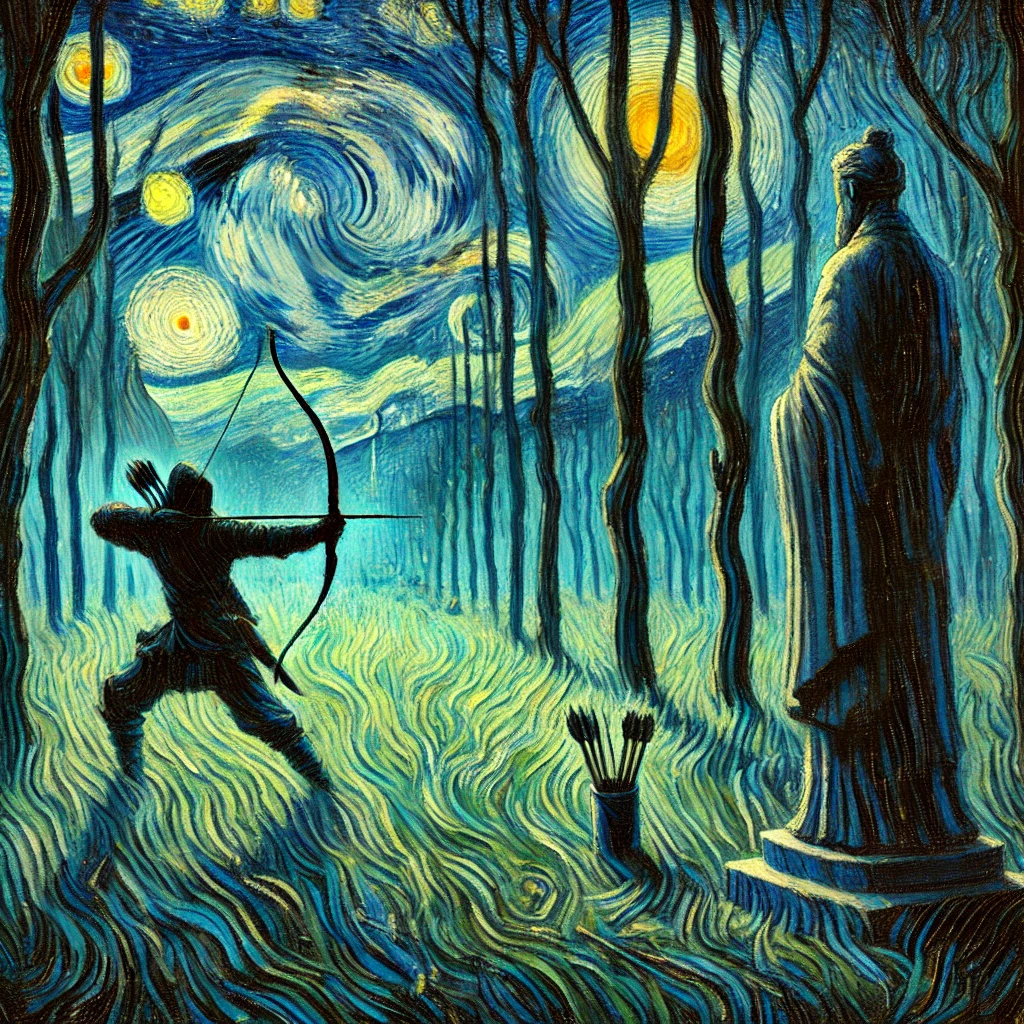The Silent Warrior: Ekalavya’s Struggle and Strength
Ekalavya's journey in the Mahabharata is one of resilience in the face of exclusion. Denied formal training, forced into isolation, and ultimately sacrificing his own skill, his story reveals deep societal biases. Yet, his strength and adaptability remain a testament to self-determination.

Introduction
Ekalavya, a figure from the ancient Indian epic Mahabharata, remains one of the most poignant symbols of devotion and sacrifice. His story is often cited as an example of unwavering dedication, but it also highlights the deep-seated social stigmas that shaped his destiny. Born into a lower caste, Ekalavya faced systemic exclusion and rejection, not because of a lack of skill or merit, but due to his birth. His story raises important questions about discrimination, the rigidity of societal structures, and the cost of ambition when pitted against privilege.
Despite his undeniable talent, he was denied formal education under the great teacher Dronacharya, simply because he was not of royal or warrior lineage. The stigma surrounding his birth overshadowed his abilities, limiting his opportunities and dictating his fate. Yet, he persevered, carving his own path and mastering the art of archery through sheer willpower and self-instruction. His tale is one of pain, resilience, and an ultimate sacrifice that underscores the cruelty of entrenched social hierarchies.
The Stigmas Ekalavya Faced
Ekalavya's life was marked by multiple layers of stigma, which dictated his treatment and ultimate fate. These stigmas were not just personal but were embedded within the larger socio-political fabric of his time:
- Caste-Based Exclusion – In ancient India, the caste system was rigid, dictating one’s opportunities and privileges based on birth. Ekalavya, belonging to the Nishada tribe, was automatically deemed unworthy of receiving the same education as the Kshatriyas (warriors) or Brahmins (priests). His exclusion from Dronacharya’s tutelage was not a reflection of his abilities but a direct consequence of this stigma.
- Rejection by the Establishment – When Ekalavya approached Dronacharya, his request to be trained was immediately declined due to his social status. This rejection was not unique to him but was emblematic of a larger system that refused to recognize talent outside the sanctioned elite.
- Unacknowledged Genius – Ekalavya’s ability to teach himself archery to an extraordinary level was an achievement that should have been celebrated. Instead, it was perceived as a threat to the established order. His excellence was met with fear rather than admiration, showcasing how social stigmas often suppress rather than encourage talent.
- Unjust Sacrifice – Perhaps the most tragic moment in his life was when he was forced to offer his right thumb as guru dakshina (teacher’s fee) to Dronacharya, despite never having received his teachings. This act was not just a symbolic surrender of his skills but also an enforced submission to a societal hierarchy that demanded obedience over brilliance.
How Ekalavya Handled These Challenges
Ekalavya’s response to these injustices was extraordinary. Rather than succumbing to despair, he found ways to persist and prove his worth:
- Self-Learning – Denied formal education, Ekalavya took it upon himself to learn by observing Dronacharya’s other students. He created a statue of Dronacharya and practiced in front of it, believing in the power of devotion and self-discipline.
- Unwavering Dedication – His efforts were not half-hearted. Ekalavya’s discipline and single-minded focus allowed him to surpass many formally trained warriors, proving that merit can exist outside the approved systems of learning.
- Acceptance of Fate – While his forced sacrifice was an ultimate injustice, Ekalavya did not retaliate. He gave up his thumb without protest, showcasing his deep-rooted respect for his teacher and an acceptance of the societal order, even at great personal cost.
- Reinvention – While the loss of his thumb was a severe blow, some versions of the story suggest that he continued to train using other techniques, refusing to let adversity completely silence him.
Lessons We Can Learn from Ekalavya
Ekalavya’s story, though tragic, provides profound lessons that remain relevant across cultures and timelines:
- Talent Should Transcend Barriers – Ekalavya’s life illustrates that ability and dedication are not dictated by birth. Society must move beyond outdated classifications and recognize true talent, irrespective of background.
- Persistence Against Injustice – Despite repeated rejections, Ekalavya did not give up. His determination is a reminder that even when doors are closed, alternative paths can be forged.
- The Cost of Blind Obedience – Ekalavya’s unquestioning surrender of his thumb raises an ethical dilemma—should respect for authority come at the cost of personal ambition and justice? His sacrifice highlights the need to question unfair traditions rather than blindly follow them.
- Acknowledgment of Unseen Efforts – Many great individuals remain unrecognized because they lack the privilege of visibility. Ekalavya’s brilliance was never officially acknowledged, reminding us to look beyond conventional success stories and recognize effort in all its forms.
- Rewriting the Narrative – History is often written by those in power. Ekalavya’s story is a lesson in reclaiming voices that have been marginalized and reshaping narratives to reflect true merit over systemic privilege.
Conclusion
Ekalavya’s life is one of the most profound yet tragic tales of the Mahabharata. His story is a stark reminder of how deeply ingrained social stigmas can rob even the most talented individuals of their rightful place in history. The loss of his thumb was more than just a personal setback—it was a deliberate act to maintain societal hierarchy, ensuring that merit outside privileged circles never posed a threat to the established order.
Yet, despite all he faced, Ekalavya remains a timeless symbol of resilience and self-belief. His legacy forces us to confront uncomfortable truths about discrimination and power structures, making us question how many modern-day Ekalavyas are still being denied their due recognition.
